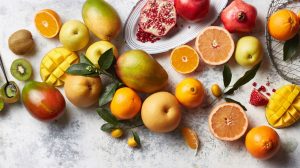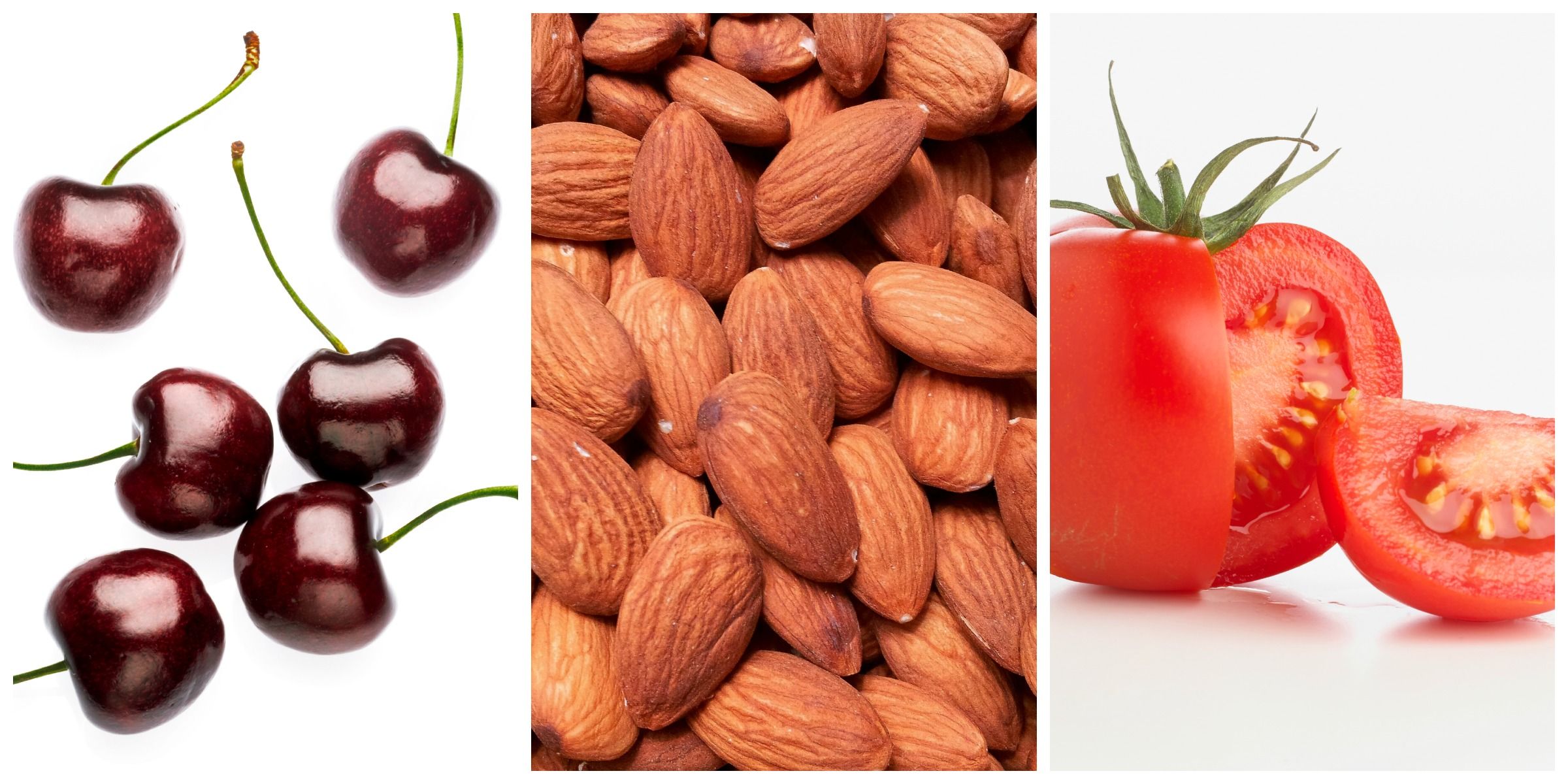20 Healthy Fruits And Their Health Benefits
20 Healthy Fruits And Their Health Benefits. There are many essential nutrients found in fruits as well as a lot of fibre. This post will explain the essentiality of fruits and the benefits attached to them.

Introduction
Fruits include a broad variety of phytonutrients, including flavonoids, that are good for your health. The risk of cardiovascular disease, cancer, inflammatory processes, and diabetes can be reduced by eating a lot of fruits and vegetables. Citrus and berries, in particular, may have disease-prevention properties. The fact that fruit is a healthy, tasty, and easy food is well-known among medical experts. You may be perplexed about which of the more than 2,000 fruit types to choose from.
Fruits are diverse in terms of nutrients and health benefits, and each variety has something special to offer. Eat a wide variety of fruits, as each colour offers a unique set of beneficial nutrients. You can’t go wrong when it comes to increasing your intake of fruits and vegetables. To summarize, any fruit (and vegetable!) is a fantastic choice for a healthy snack. Eat four to five servings of fruits and vegetables every day, according to research, and you’ll feel better and be less likely to become sick or gain weight or develop type 2 diabetes.
Read also: How to know when you need to gain weight for your health
How much fruit is needed daily?
You should consume as much fruit as you require based on your age and gender as well as your height, weight, and physical activity level. Pregnancy and breastfeeding status affects how much a woman should budget. The Fruit Group often includes 1 cup of fruit, 100% fruit juice, or 12 cups of dry fruit.
Importance of Fruits
- Eating fruits and vegetables as part of a balanced diet reduces the risk of chronic illnesses including diabetes and heart disease. Fruits are rich in nutrients that are essential for good health and body upkeep.
- Items with fewer calories per cup, like fruits, may help you lose weight by replacing other high-calorie foods with their lower-calorie alternatives as part of a balanced diet.
- Generally, good eating, including plenty of fruits and veggies, may help prevent heart diseases, such as heart attack and stroke.
- Proper nutrition that includes plenty of vegetables and fruits may help prevent certain kinds of cancer.
- As many Americans do not receive enough fibre and potassium in their diet, including fruit may help remedy this situation.
List of healthy fruits and their health benefits
1. Apricot
Each apple has about the same calorie count as five apricots; however, apricots are much higher in all of these nutrients than apples. Apricots include a lot of beta carotene, potassium, and fibre, making them a healthy snack. They’re one among the ten most nutrient-dense fruits, as you’ll see below. Apricots that have been dried. Beta carotene, potassium, and fibre are especially abundant in dried apricots (3 grams per 10 dried apricot halves). Read the label before buying dried apricots.
The orange colour of apricots is frequently preserved by adding preservatives like sulfites or sulfur dioxide. These are going to be noted on the package. Some individuals may be allergic to sulfites. Sulfite-free apricots may be found at health food shops. Even though they have a less attractive brownish hue, these beans are just as filling and healthy as the white or yellow varieties. Consuming additional sulfites just to make apricots appear oranger is not worth it.
2. Apple
An apple a day may not be able to prevent all of your medical visits, but apples are a great source of nutrition, handy, and always on hand. Apples have a high fibre level because they include a lot of the soluble fibre pectin, which lowers cholesterol. Apples earn an A+. The flavonoids found in them may help fight cancer. The fibre, vitamins, and minerals in apple juice may be removed during processing, thus eating the entire apple provides more nutrition than just drinking the juice.
When an apple’s flesh becomes dark, it’s lost some nutrients due to oxidation. Eat fresh fruit to obtain the most flavour and nutritional value.
Read also: How to develop healthier habits
3. Blueberries
Antioxidant and anti-inflammatory qualities are well-known for blueberries. A plant pigment and flavonoid called anthocyanin gives blueberries their distinctive blue-purple hue. Free radicals, which may damage cells and contribute to illness, are combated by this chemical (8Trusted Source). Anthocyanin-rich foods have been linked to a reduced risk of type 2 diabetes, heart disease, obesity, high blood pressure, certain kinds of cancer, as well as cognitive loss, according to many studies.
Anthocyanin-rich berries, such as blueberries, were shown to reduce the incidence of type 2 diabetes by 5% when eaten daily in moderation, according to research with over 200,000 participants. Blackberries, bilberries, elderberries, cherries, and chokeberries are other berries rich in anthocyanins.
4. Watermelon
The majority of a watermelon’s weight is water, making it an excellent hydration food. About 20% of your fluid intake comes from food, so eating water-rich snacks like watermelon may keep you hydrated and prevent headache-inducing dehydration. Fruit’s high water, potassium, and magnesium content help balance out your diet’s salt intake. Try it with feta and mint in a salad, or grill it for a refreshing summer dessert instead.
5. Avocados
Avocados are a unique fruit in that they have a low carbohydrate content but are rich in beneficial fats. Originally from South America, perhaps Mexico or Peru, the fruit was originally known as the “crocodile pear” in the English language. The avocado’s adaptability is one of its greatest features. For example, you may be familiar with the current morning craze of “avocado toast.” To be sure, avocados may be used in a wide variety of recipes, from guacamole to avocado ice cream to chocolate mousses and other delectable treats.
When it comes to the title of ‘healthiest oil,’ cold-pressed avocado oil rivals even extra virgin olive oil. It’s a heat-stable lipid that includes many beneficial elements. Avocados are very nutrient-packed, with high levels of fibre, protein, vitamins, and minerals like potassium. They’re also a good source of fat, too.
6. Lemons
Citrus fruits like lemons, which have many health advantages, are often used in traditional treatments. Vitamin C and other antioxidants are present in these fruits, as are those of the citrus family. It’s impossible to live without antioxidants. In the body, free radicals may harm cells and contribute to illnesses like cancer. These chemicals sweep up free radicals. These fruits’ flavonoids contain antimicrobial, cancer-fighting, and diabetes-fighting effects. Lemons and other citrus fruits include health-promoting phytochemicals as active ingredients. Vitamin C, folic acid, potassium, and pectin are just a few examples.
7. Bananas
Banana fits go much beyond the potassium they contain. Bananas contain 7% of their DV in potassium, as well as the following nutrients: Among the nutrients in this serving, are Vitamin B6 (27% of the DV), Vitamin C (12%), and Magnesium (8%). Polyphenols and phytosterols, two plant components found in a broad range of foods, can promote your general health. Aside from that, they’re rich in prebiotic fibre that helps the development of good bacteria in the digestive system.
Note that green, unripe bananas contain more complex carbs than mature ones and are an excellent source of the dietary fibre pectin. Numerous health advantages have been shown to be associated with each of these, including better management of blood sugar and improved digestion.
8. Blackberries
Blackberries are among the most flavorful fruits you’ll ever taste. They are a tiny berry that grows on brambles and is edible with a strong flavour. Despite having a lower fructose content than other fruits, this one tastes sweet and delicious. Blackberries are a popular fruit variety grown all over the world. It’s also possible to discover them growing naturally in the wild, where they’re said to have a higher nutritional profile and contain more polyphenols. Use fresh cream and sugar to make a wonderful dessert.
9. Blackcurrants
Berries such as black currants and red currants may be found in abundance across Europe. The sour and acidic taste of blackcurrants necessitates the use of sugar before eating them. They’re popular as a culinary fruit in cooking and in the creation of different goods since they’re readily available and have a distinctive taste. One of the most popular commercially successful fruit varieties, blackcurrants may be found in anything from sweets to juice to soda to tea. Blackcurrants provide a significant quantity of vitamin C per 100 grams.
10. Grapefruits
When it comes to fruits and vegetables, grapefruit is an excellent choice since it is low in calories, rich in fibre, and packed with vitamin C. The beta carotene content of grapefruit increases if you choose the pink or red type rather than the white. Soluble pectin fibre makes about half of the fibre, which is beneficial for the intestines (good for the heart). However, keep in mind that the stringy walls that divide the segments contain a significant amount of fibre. Much of the fibre will be lost if you eat grapefruit segments with a spoon.
Read also: List of ways to stay healthy when you work at a desk
11. Guavas
Guavas may be difficult to come by, but if you do, enjoy them while you can. They have a lot of fibre and vitamin E compared to other fruits. Most stores sell guava juice, but it’s sweetened with corn syrup, so it has less nutritional value than raw fruit.
12. Mangos
The vitamin C, calcium, and beta-carotene found in mango make it a great snack throughout the summer. We like to make a large batch of these mango skewers and store them in the refrigerator or fridge for quick snacks. Preparation is enjoyable for the whole family since it gets everyone engaged in the kitchen, and the kabob is an added bonus! Mango dices are delicious in salads, or you can freeze them in pieces and use them in smoothies.
13. Kiwi
Kiwi’s mix of folate, calcium, and B-vitamins, as well as vitamin C, potassium, and phytonutrients, may help you unwind. Consuming a kiwi before bed may help you sleep better, according to some (early) studies. Slice some up for a refreshing side dish or include them in a slaw.
14. Carper
Capers are a kind of fruit, in case you didn’t know. Capers, a pea-sized green fruit native to the Mediterranean and Asia, are often eaten with salmon and horseradish sauce. Capers are the flower buds of the caper shrub, plucked and preserved in vinegar. As a consequence of spending so much time in brine, capers have a distinctive flavour that is both sharp and salty. Capers, on the other hand, have a flavour of their own and are a standout in the dish. This dish pairs especially well with fish because of the sharp difference in tastes.
15. Cherries
Cherries are a drupe – a fruit with a hard stone within – and one of the most popular fruit types. Small and delicious, cherries are one of nature’s sweetest and juiciest fruits. Cherries come in two flavours: tart (sour) and sweet (sweet). The nutritional profiles of these two fruit types are quite similar, with the exception of the sour cherries. Russian, Eastern European and Southern Asian countries are the primary sources of sour cherries. Sweet cherries, on the other hand, are mostly produced in Turkey and the United States.
16. Oranges
Oranges have a lot of vitamin C in them, with 91% of the daily value in only one orange. Additionally, they’re rich in potassium, folate, and thiamine (a B vitamin), as well as fibre and phytochemicals (a plant compound). Whole oranges have been shown in studies to reduce inflammatory markers, blood pressure, cholesterol, and blood sugar levels after meals. 100% orange juice has a lot of minerals and antioxidants, but it’s typically devoid of the fibre you need. Choose pulp-containing varieties over pulp-free ones if you want to get more fibre.
That being said, consume more whole oranges and limit your juice intake to no more than 1 cup (235 mL) each serving.
17. Pineapple
Pineapple has 88 per cent of the daily value (DV) for vitamin C and 73% DV for manganese in a single cup. A powerful vitamin, manganese aids in metabolism and blood sugar control. Polyphenolic chemicals found in pineapple are antioxidant and anti-inflammatory in nature. Bromelain, an enzyme found in pineapple, is frequently used in cooking to soften meats. Although there is little study on this, anecdotal evidence suggests that this enzyme aids digestion.
18. Green snap beans
Fresh green beans are a nutritious complete meal or salad ingredient since they are high in vitamins A, C, and K, as well as folic acid and fibre. A variety of green beans may be obtained in the vegetable department of any local supermarket, niche shop, or gardener’s market. There are over 130 distinct kinds of green bean types. The salt content in half a cup of tinned green beans may reach 300 micrograms, so go for fresh whenever possible.
19. Strawberry
Strawberries have a high water content for a luscious red berry. Per serving, the seeds offer a significant amount of dietary fibre in the form of seeds. Strawberries are loaded with vitamins and minerals that are good for you. Flavonoids called anthocyanins, which are found in high concentrations in blueberries may aid improve cardiovascular health. Strawberries include heart-healthy amounts of fibre and potassium.
Strokes were less common in women who ate three or more servings of strawberries or blueberries per week, which are rich in anthocyanin content. Flavonoid quercetin is found in strawberries and other bright berries. The anti-inflammatory chemical is found in nature.
20. Olives
Olives are a wonderful fruit to include in your diet even if you don’t often associate them with it. Copper, vitamin E, and oleic acid—a monounsaturated fat—are all abundant in them. They include anti-inflammatory and antioxidant plant polyphenols including oleuropein, hydroxytyrosol, and quercetin. Many studies have linked eating plenty of whole olives and olive oil to a reduced risk of heart disease and diabetes type 2 as well as cognitive decline and obesity.
Read also: Improving your mental health
Conclusion
Various fruits offer various health advantages, and they come in a variety of forms and sizes. Include a wide range of fruits in your diet for optimum effects. When you eat fruit, you’re giving your body important nutrients including vitamins, antioxidants, and fibre. Cardiovascular health, digestion, weight loss, and skin health are all enhanced as a result.
We Believe This Article Was Helpful, Don’t Hesitate To Share This Information With Your Friends On Facebook, Twitter, Whatsapp and Google plus.
Copyright Warning: Contents on this website may not be republished, reproduced, redistributed either in whole or in part without due permission or acknowledgement. All contents are protected by DMCA.
The content on this site is posted with good intentions. If you own this content & believe your copyright was violated or infringed, make sure you contact us via This Means to file a complaint & actions will be taken immediately.



